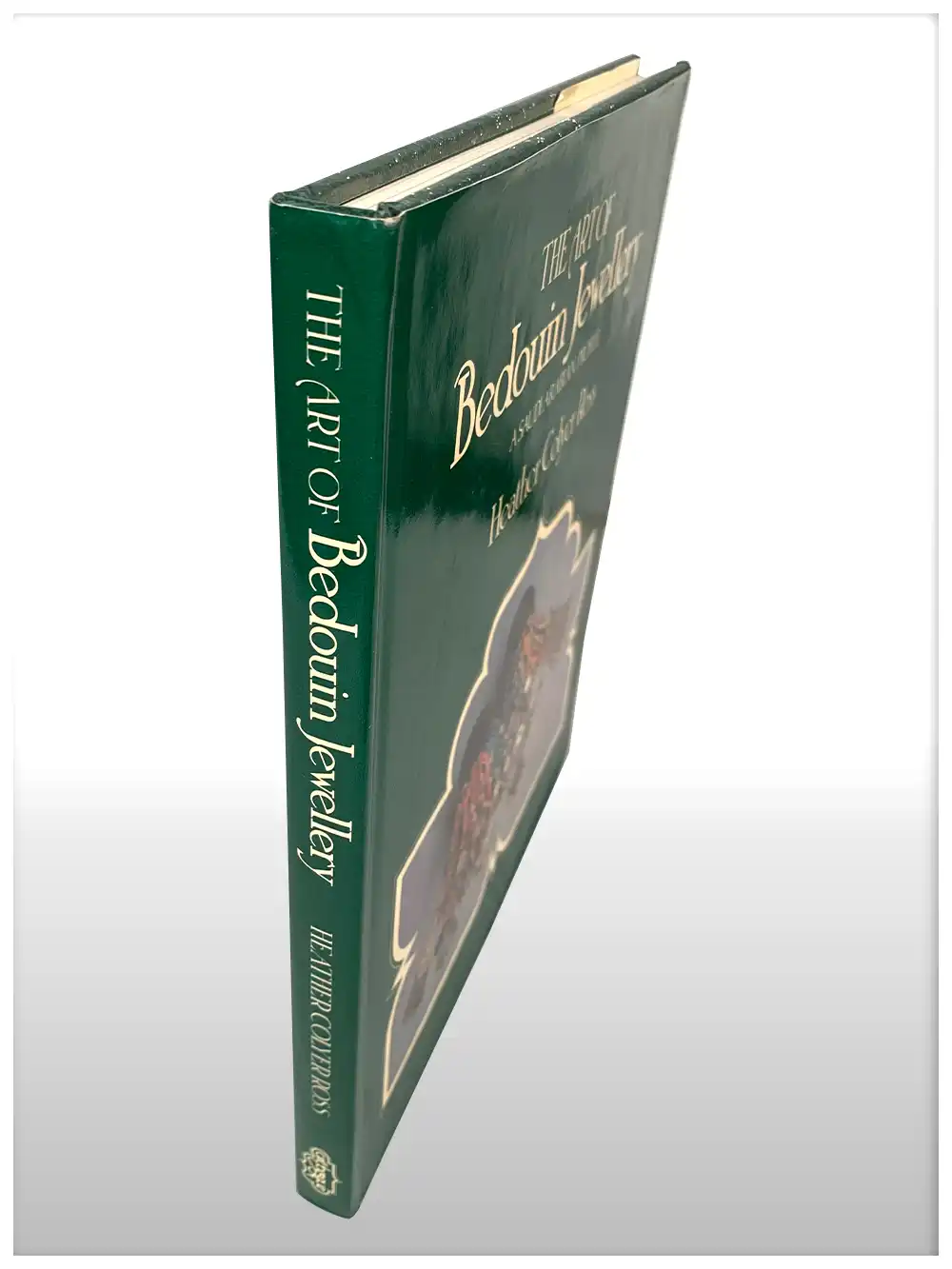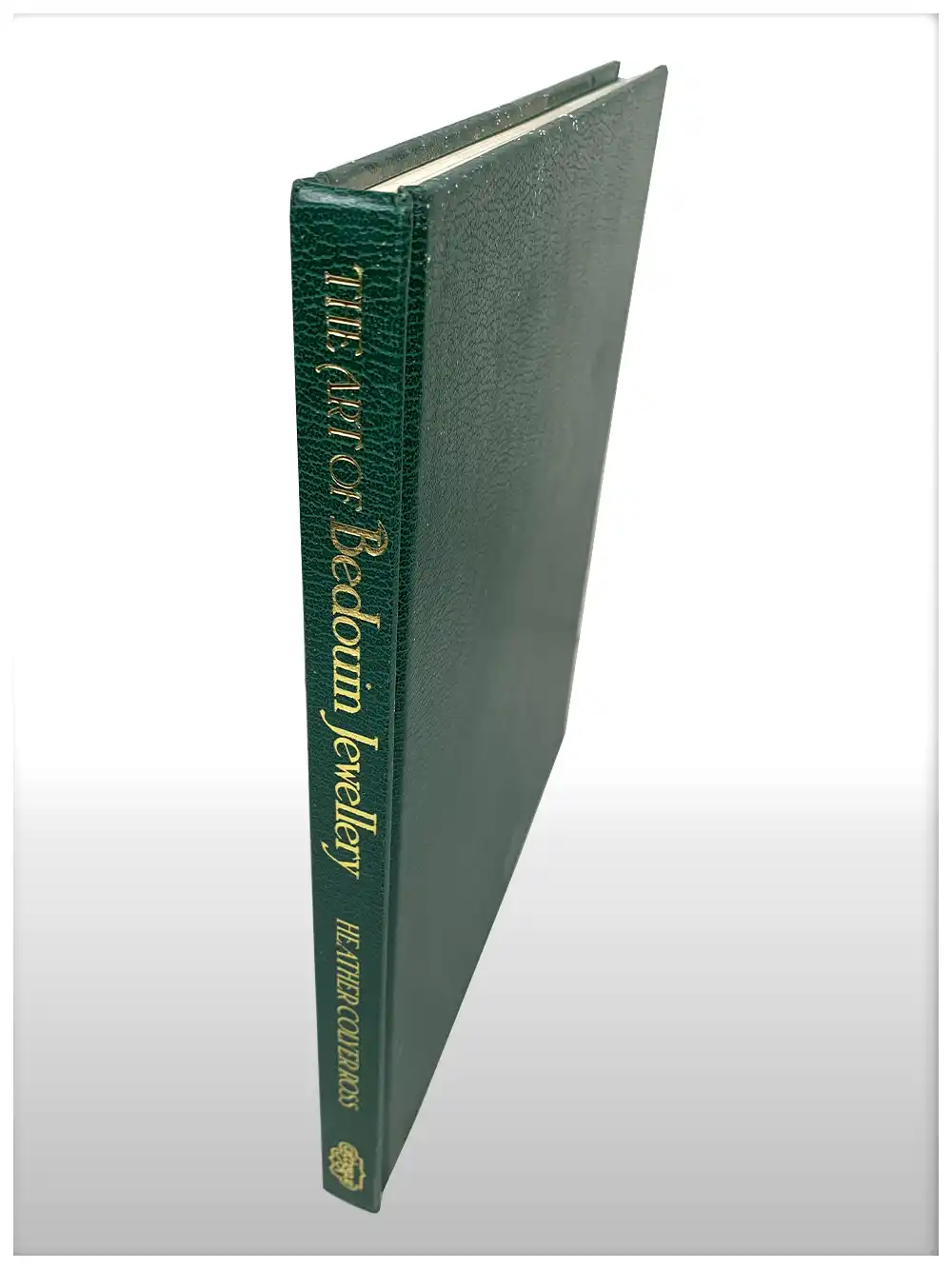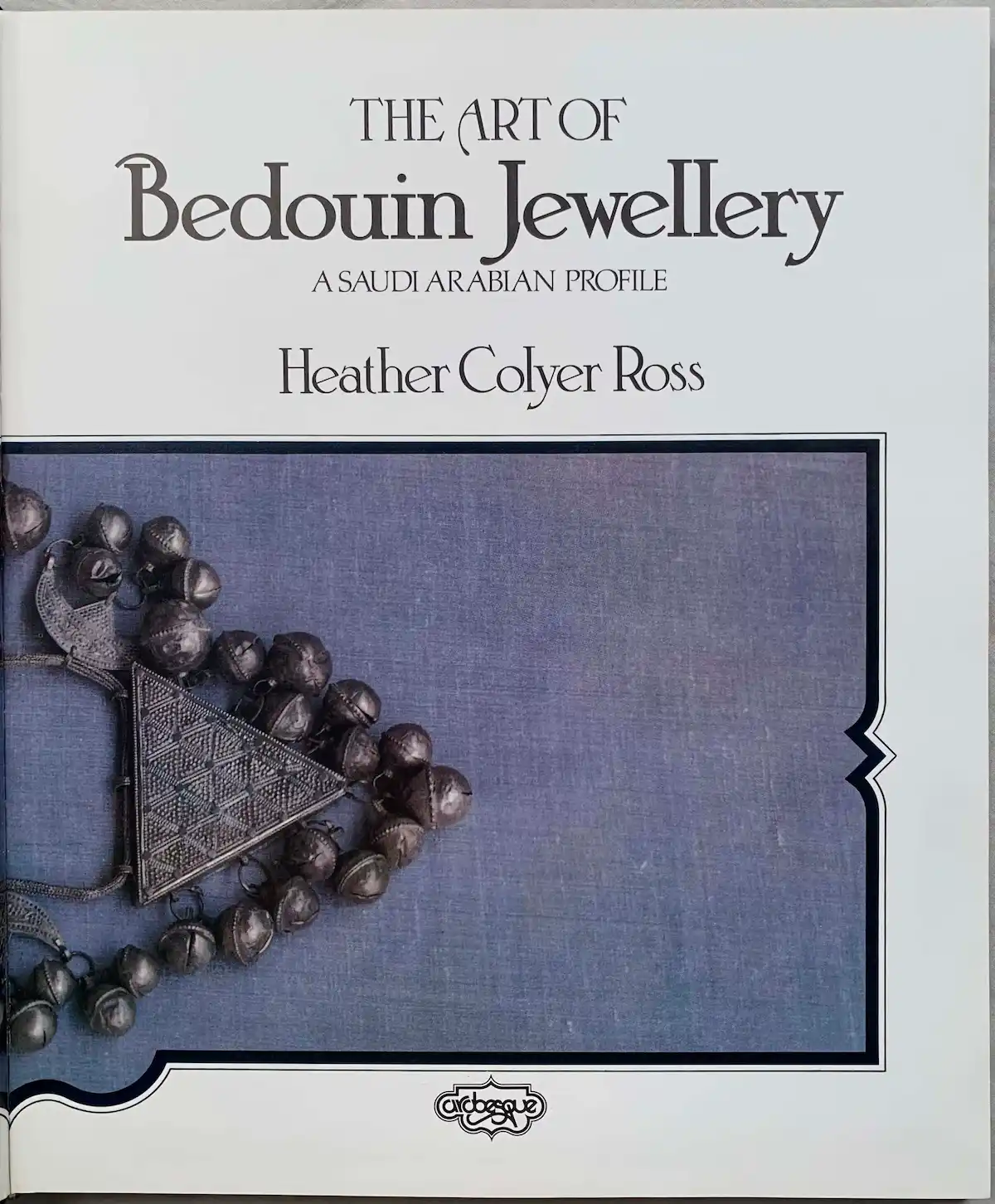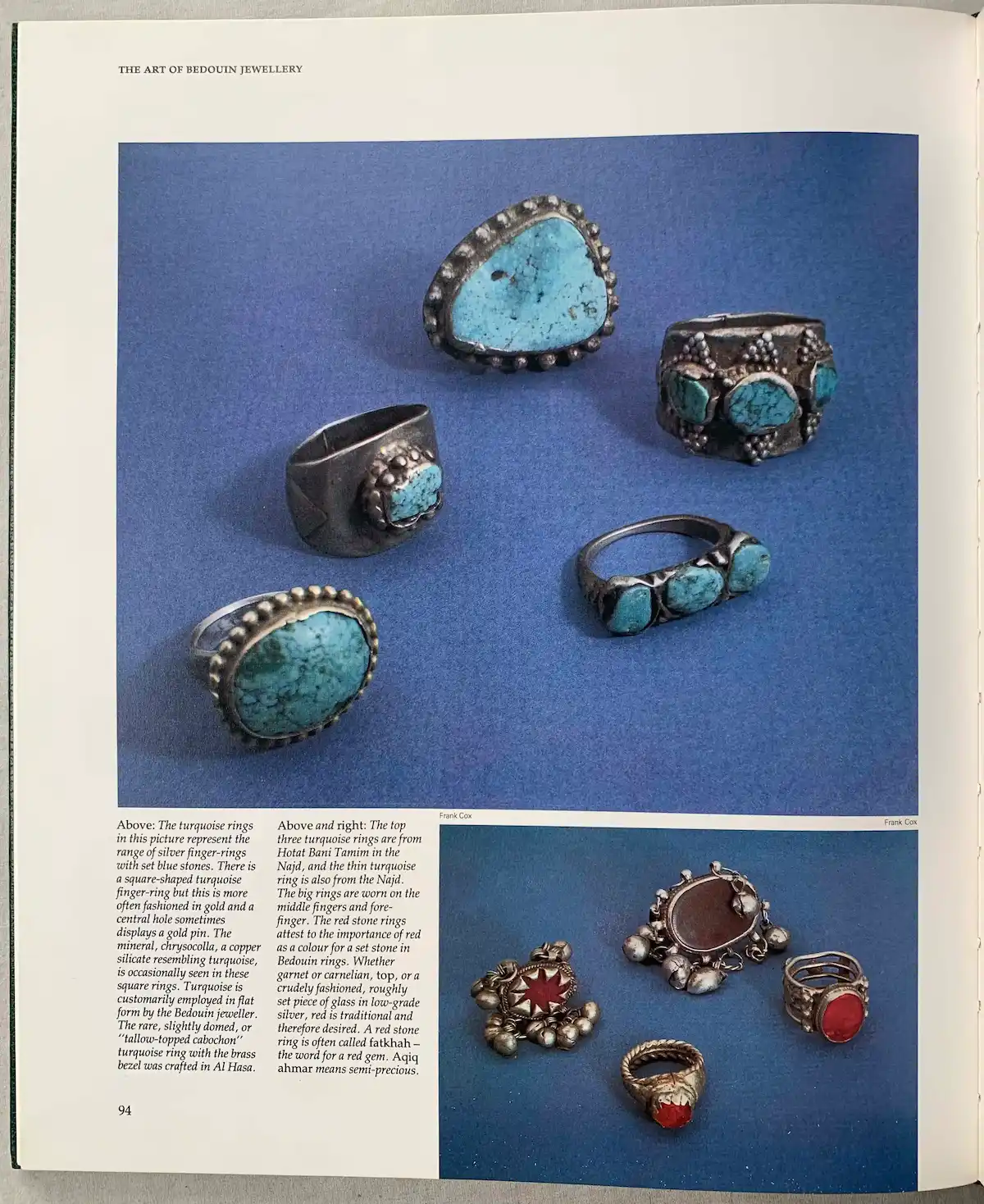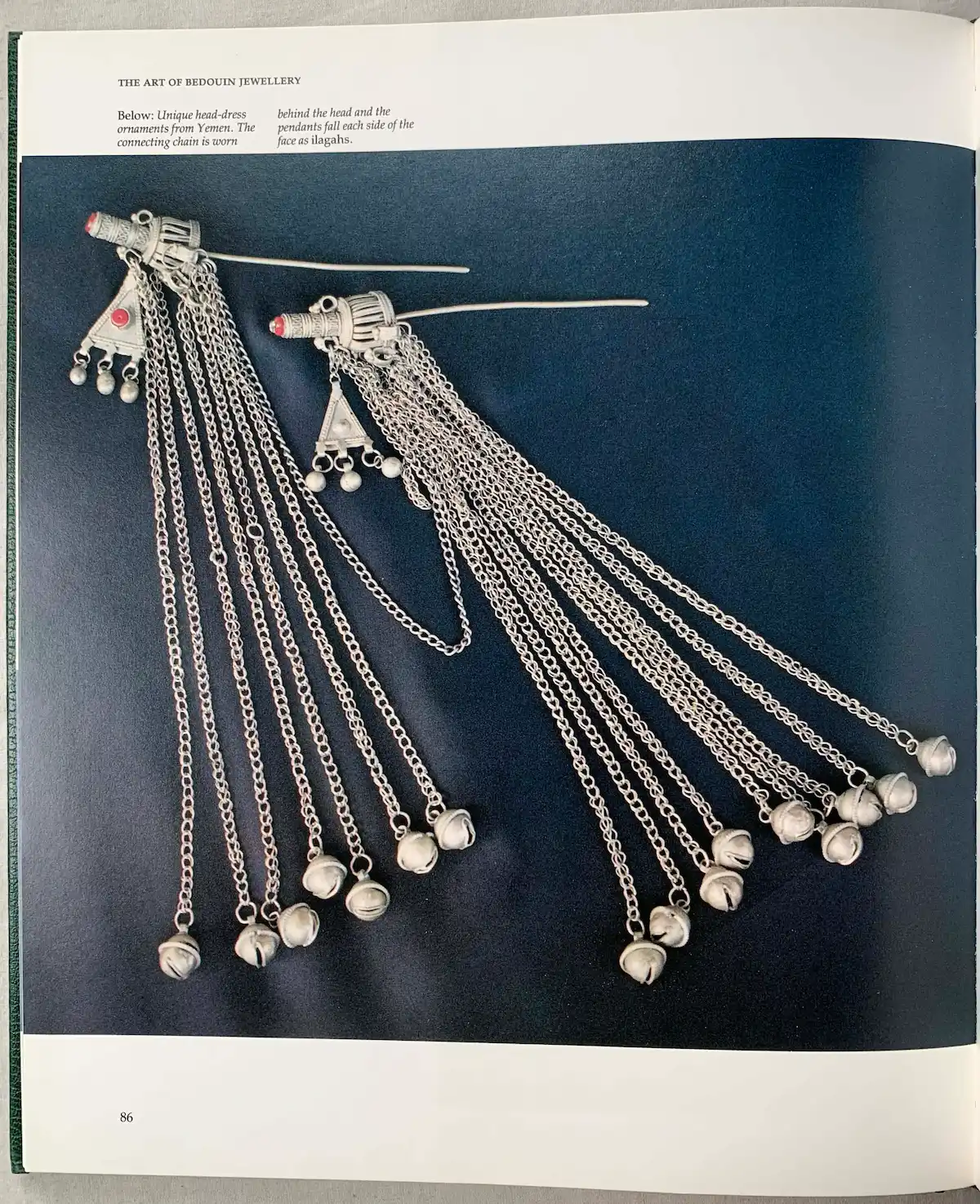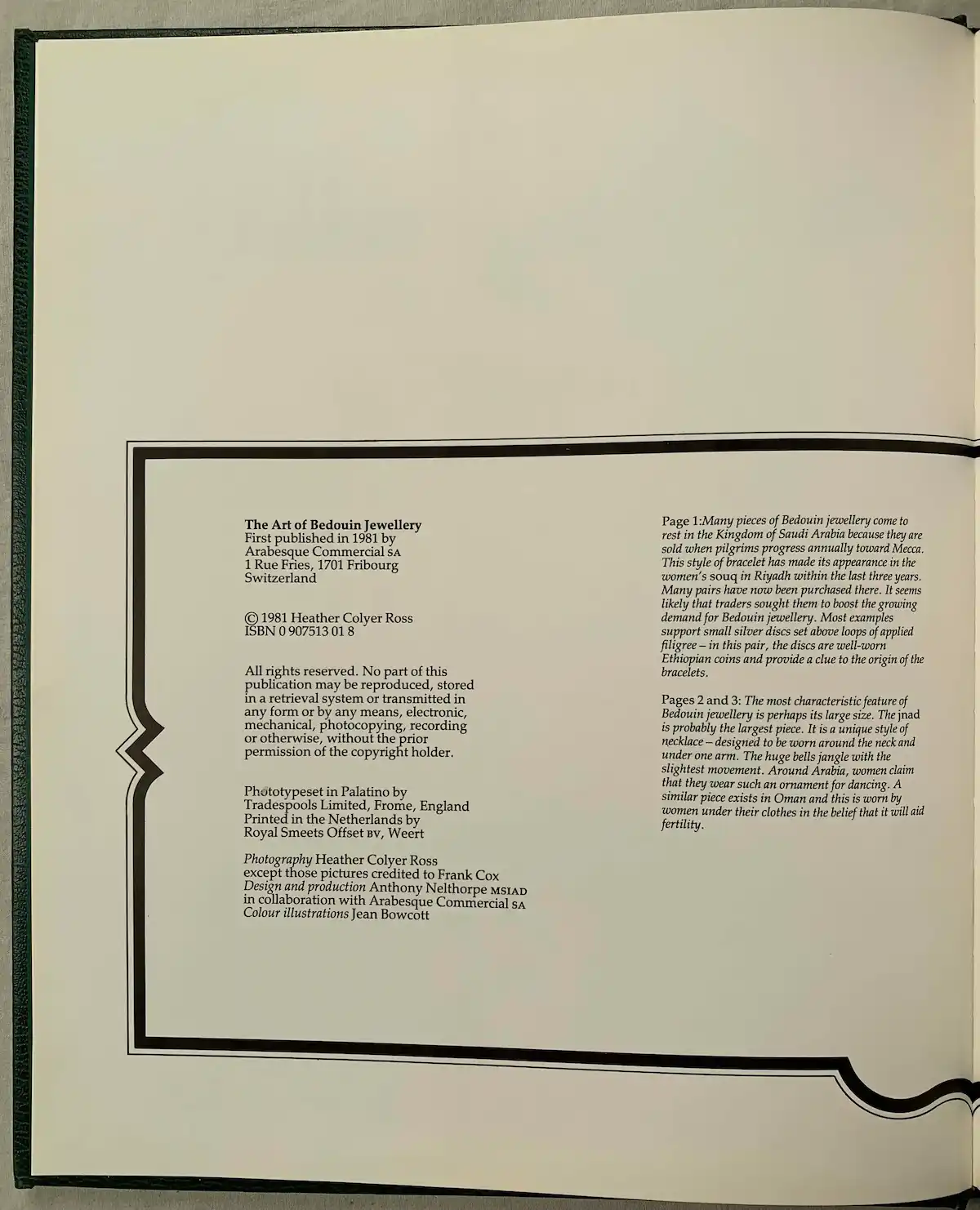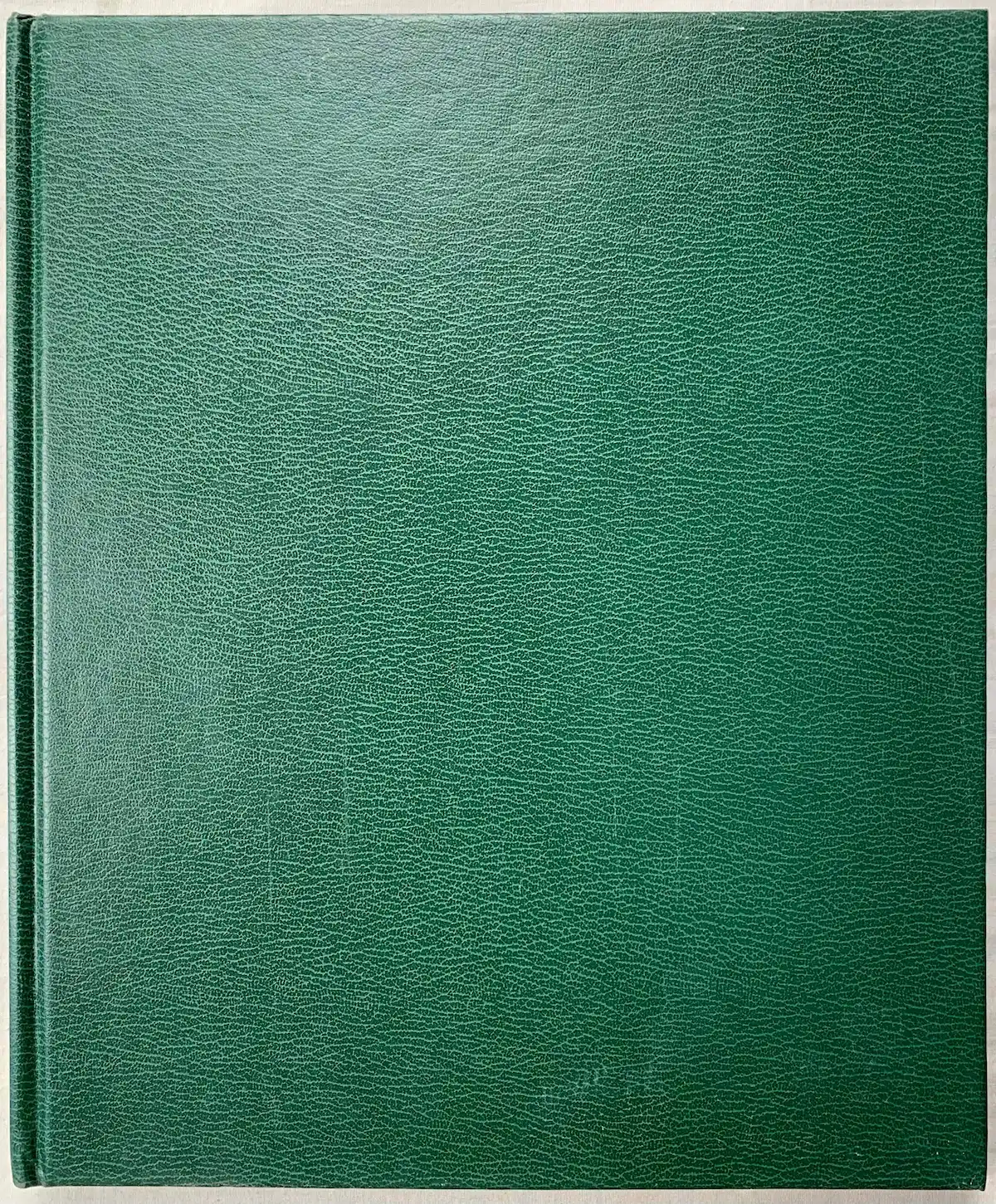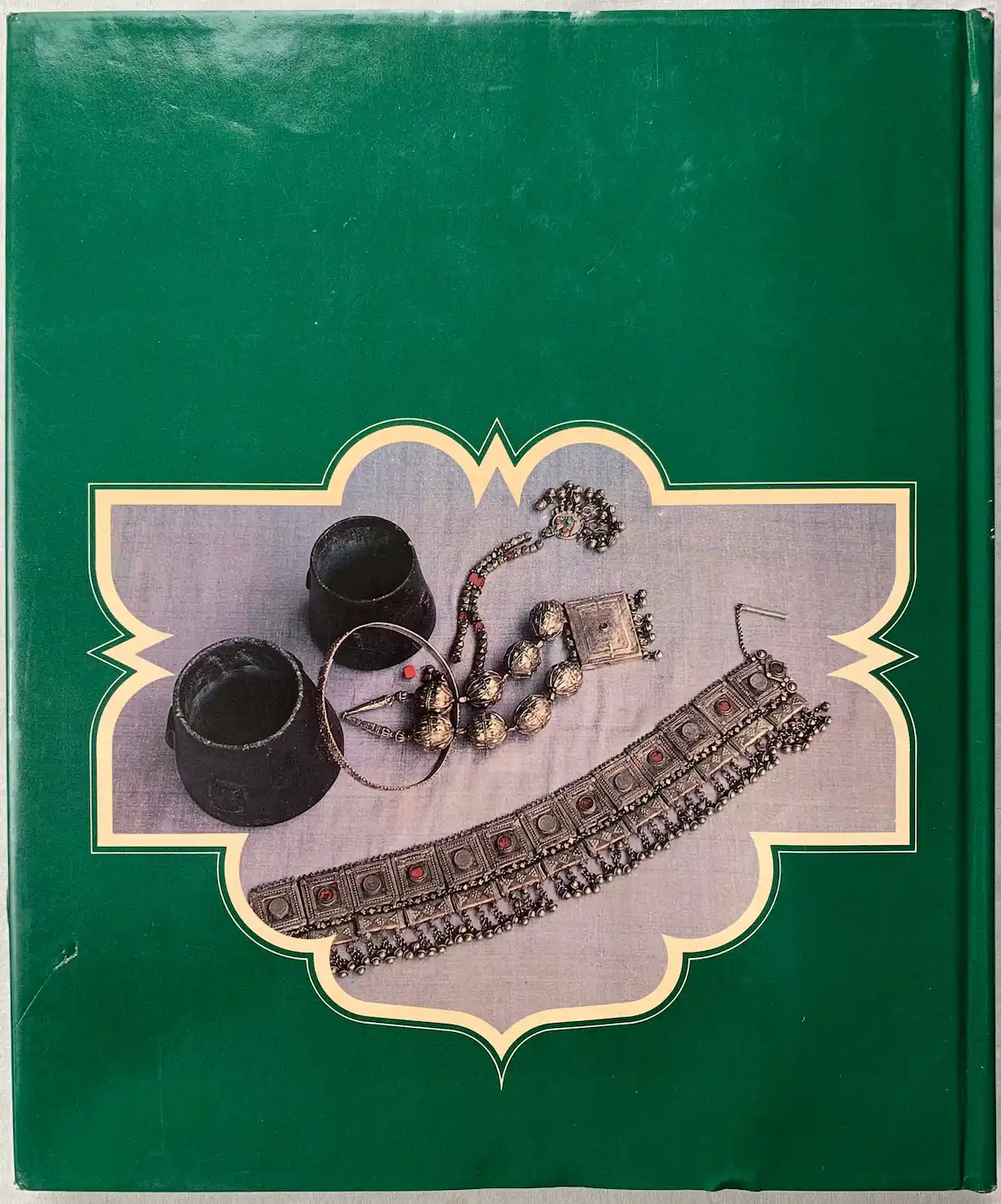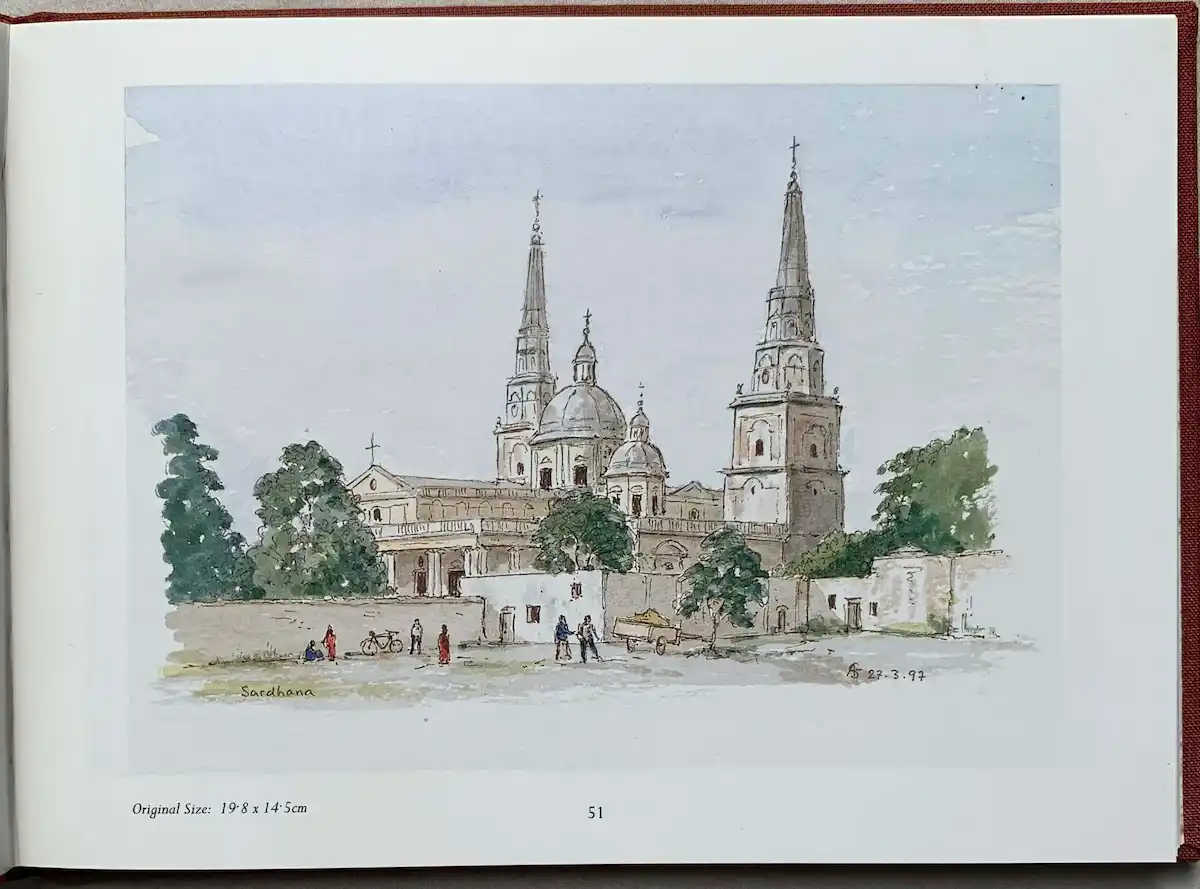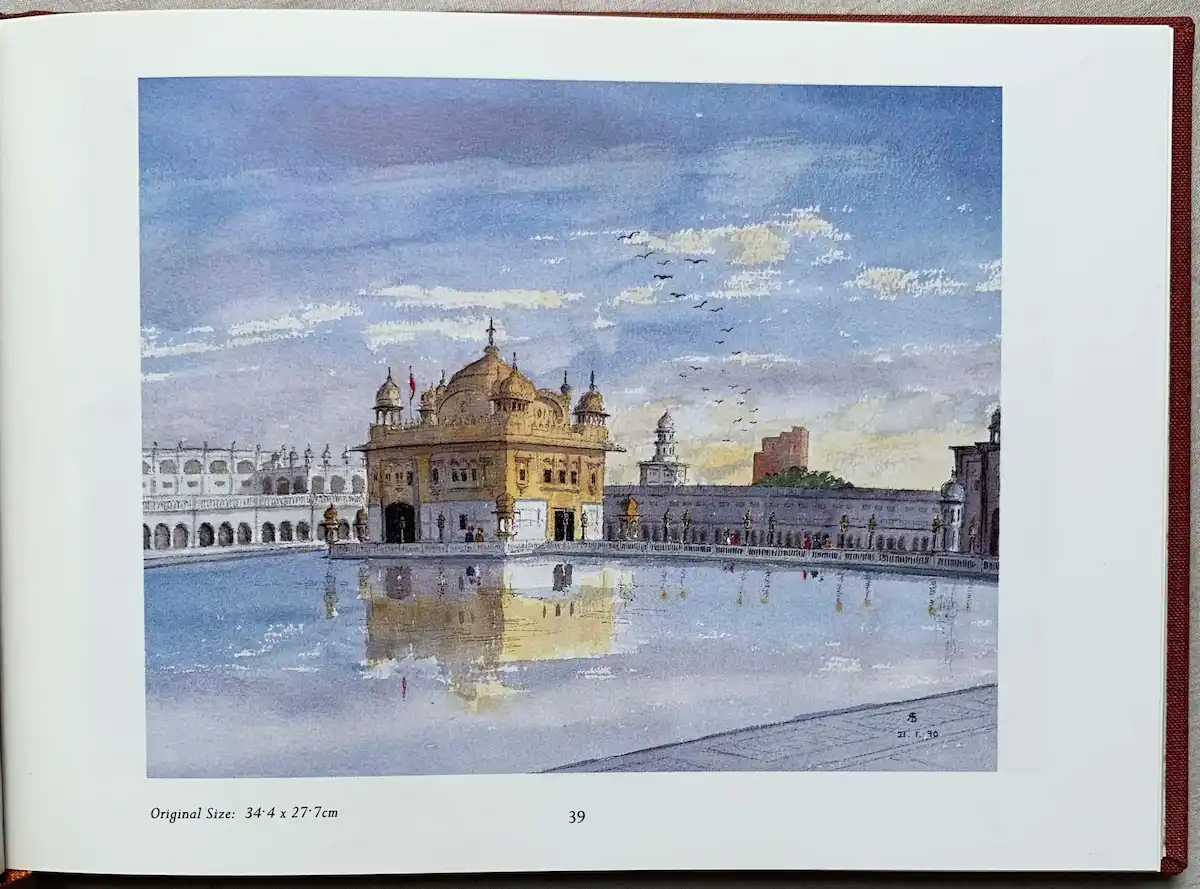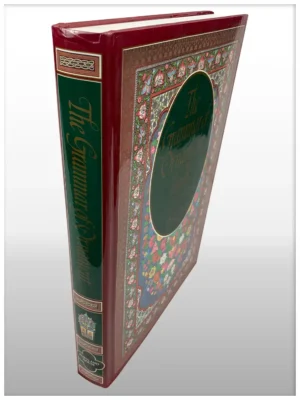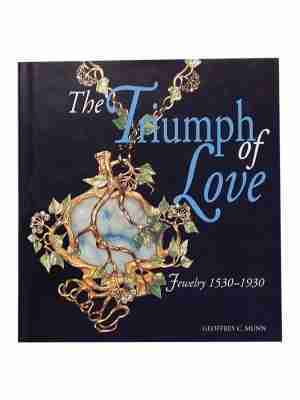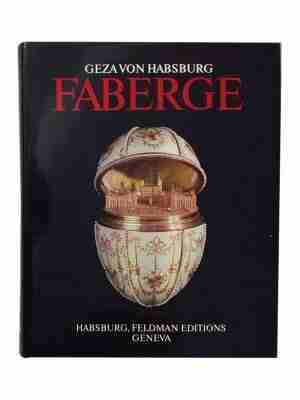Description
The Art of Bedouin Jewellery
First published in 1981
© 1981 Heather Colyer Ross
ISBN: 0-907513-01-8
Phototypeset in Palatino by Tradespools Limited, Frome, England.
Printed in the Netherlands by Royal Smeets Offset BV, Weert.
Photography: Heather Colyer Ross (except where credited to Frank Cox)
Design & Production: Anthony Nelthorpe MSIAD, in collaboration with Arabesque Commercial SA
Colour Illustrations: Jean Bowcott
Page 1:
Many examples of Bedouin jewellery eventually find their way to the Kingdom of Saudi Arabia, often brought by pilgrims traveling annually to Mecca. This particular style of bracelet has appeared in the women’s souq in Riyadh within the last three years, where numerous pairs have been purchased. It is likely that traders sourced them to meet the rising demand for Bedouin jewellery. Typically, these bracelets feature small silver discs mounted above loops of applied filigree. In this pair, the discs are worn Ethiopian coins, which provide a clue to their origin.
Pages 2–3:
Perhaps the most striking feature of Bedouin jewellery is its bold size. The jnad is likely the largest and most unique example—a distinctive necklace designed to be worn around the neck and under one arm. Its massive bells jingle with the slightest movement. Across Arabia, women claim such ornaments are worn for dancing. A related piece exists in Oman, where women wear it beneath their clothing in the belief that it enhances fertility.


